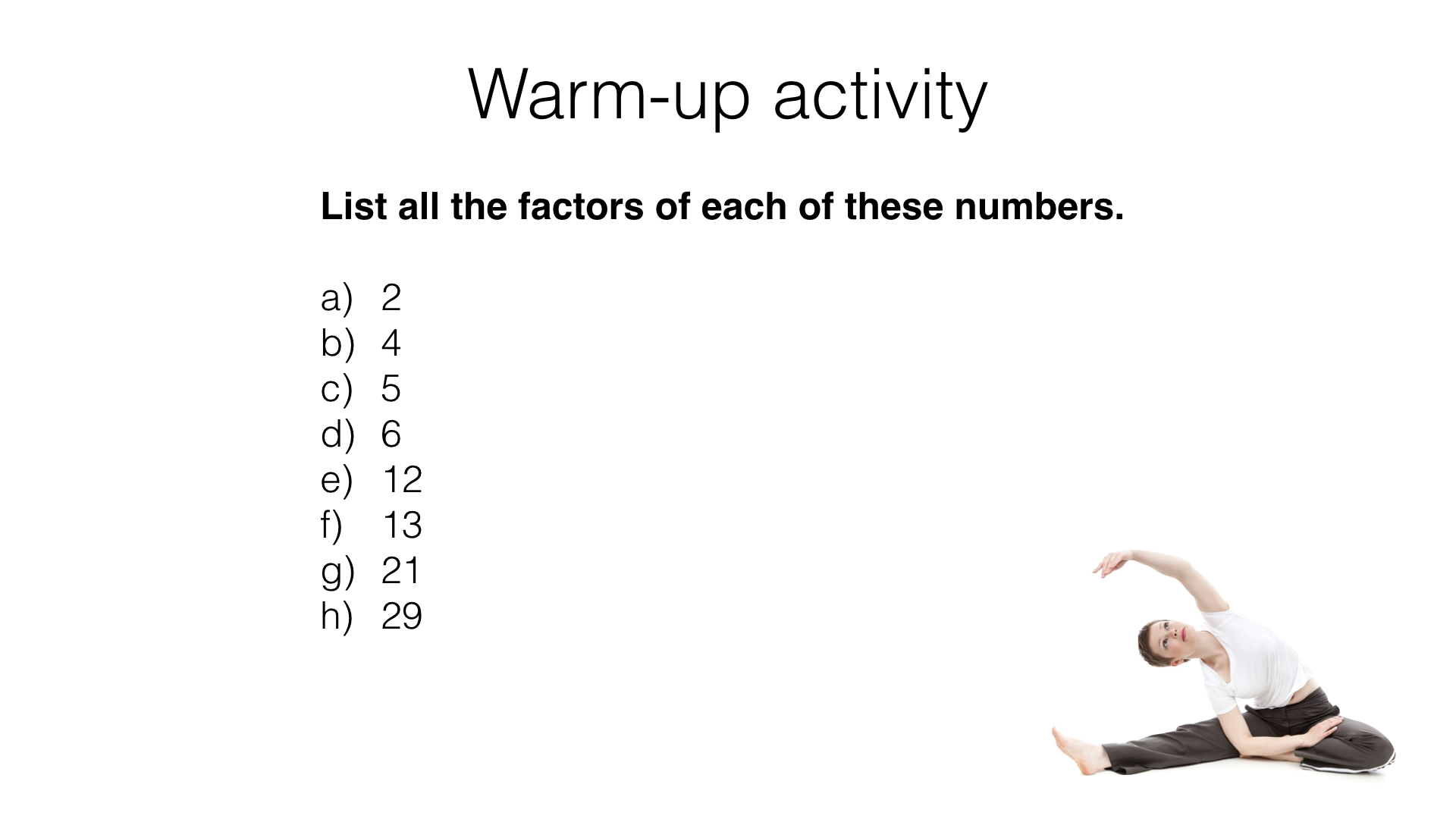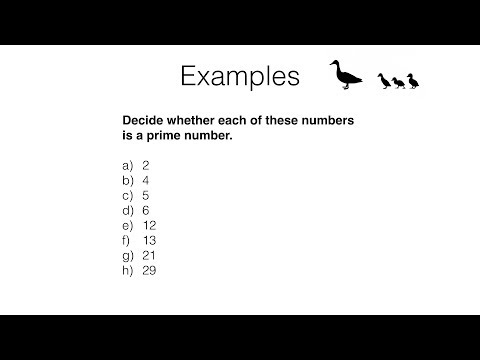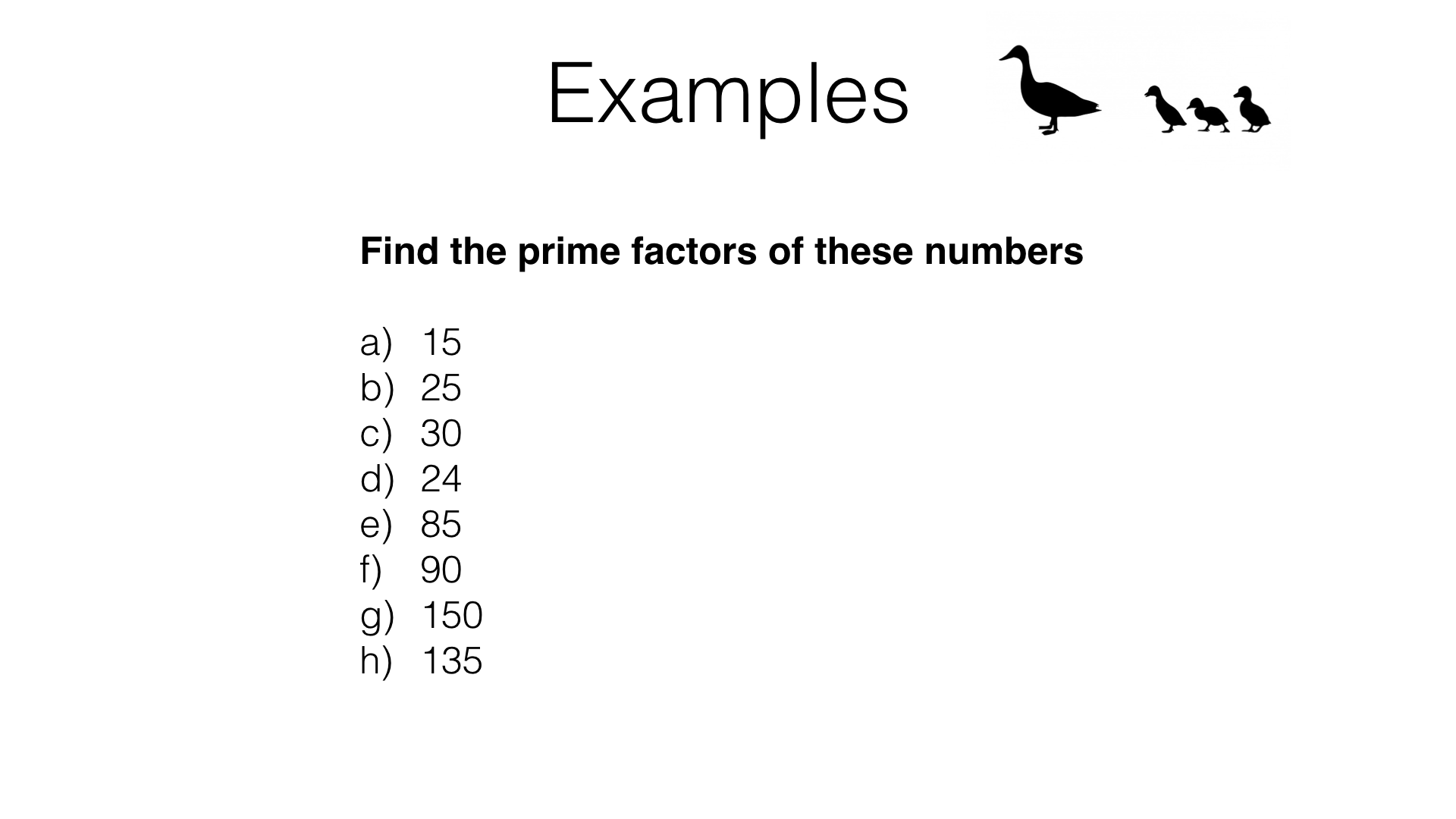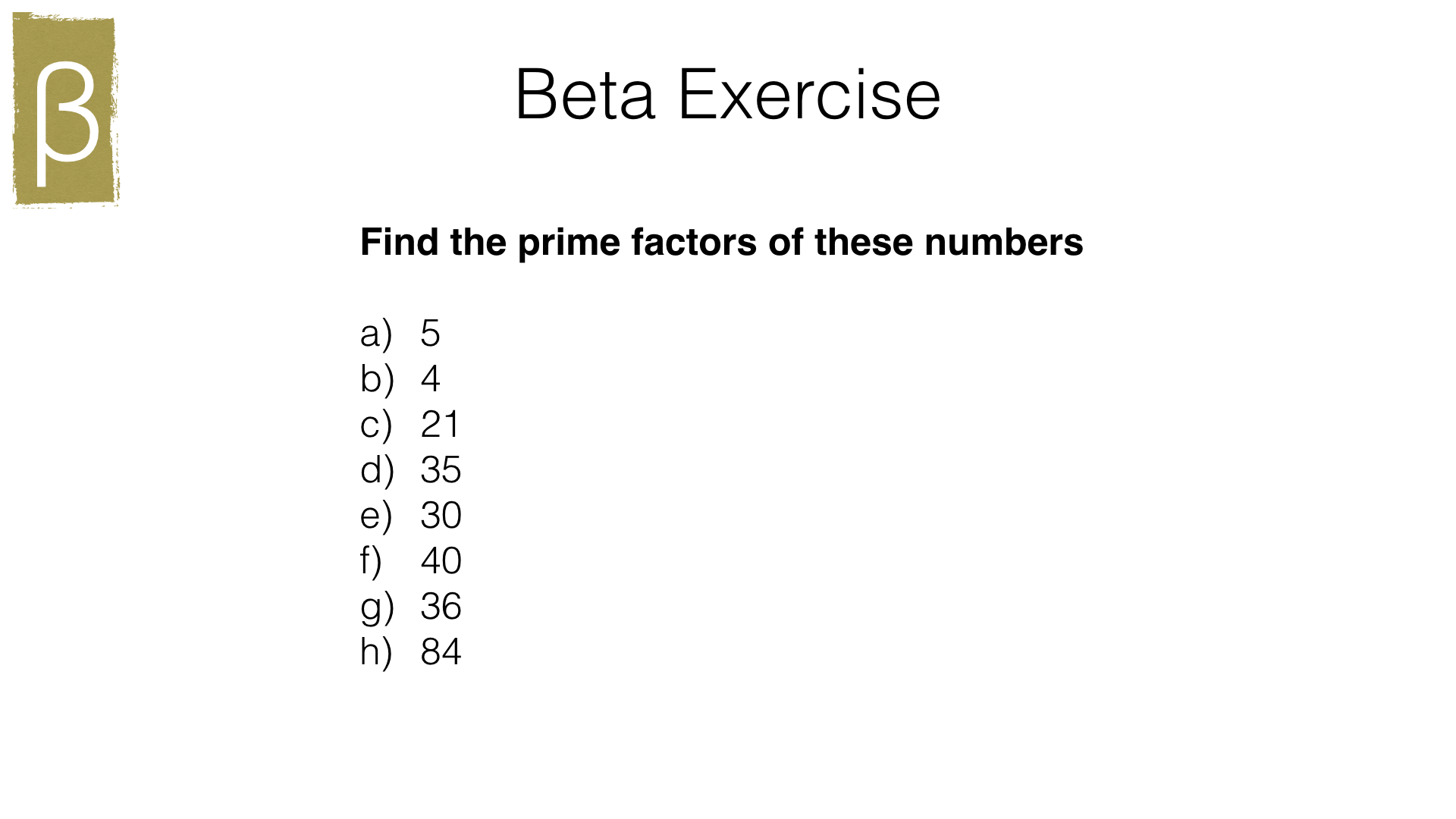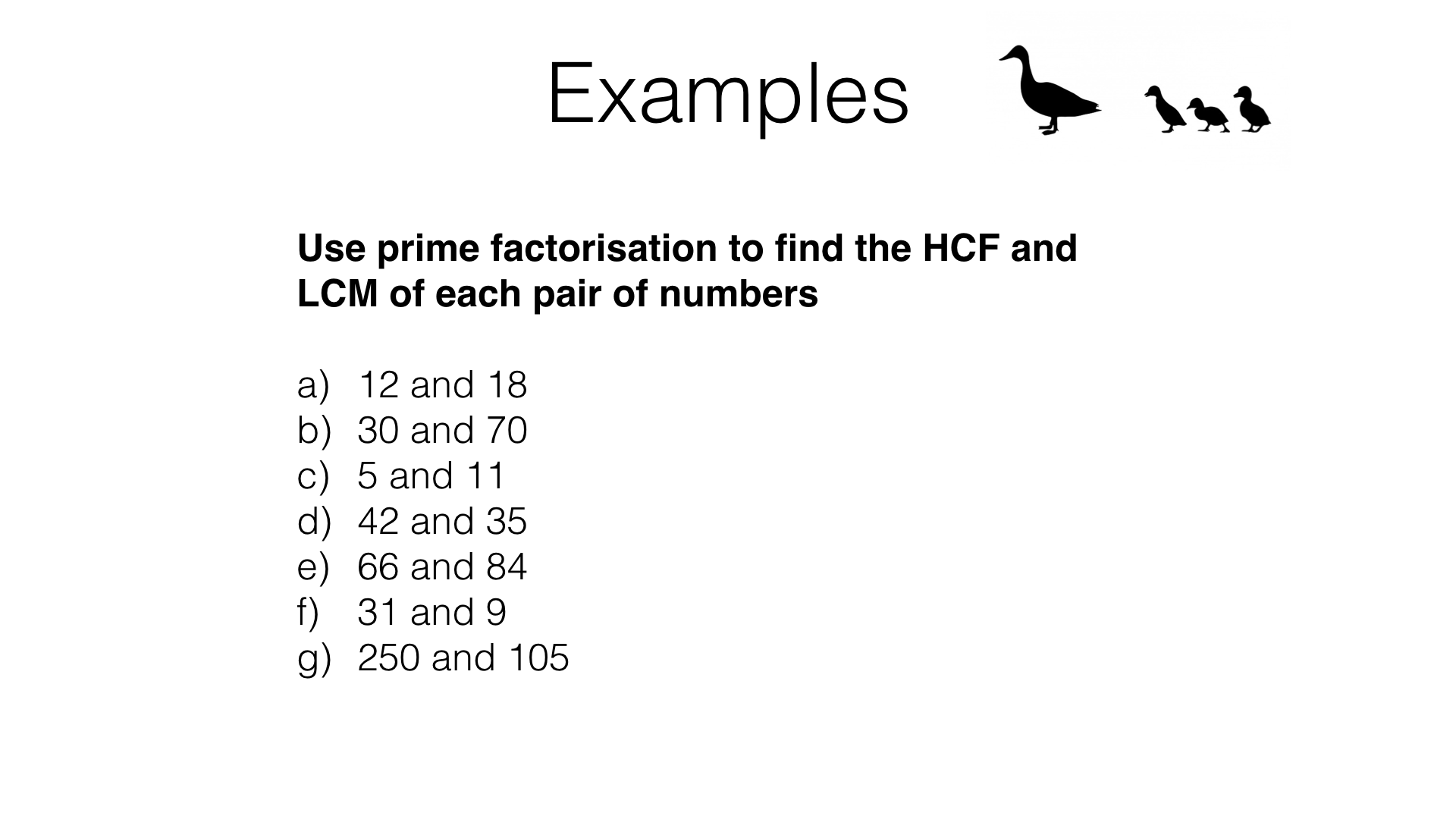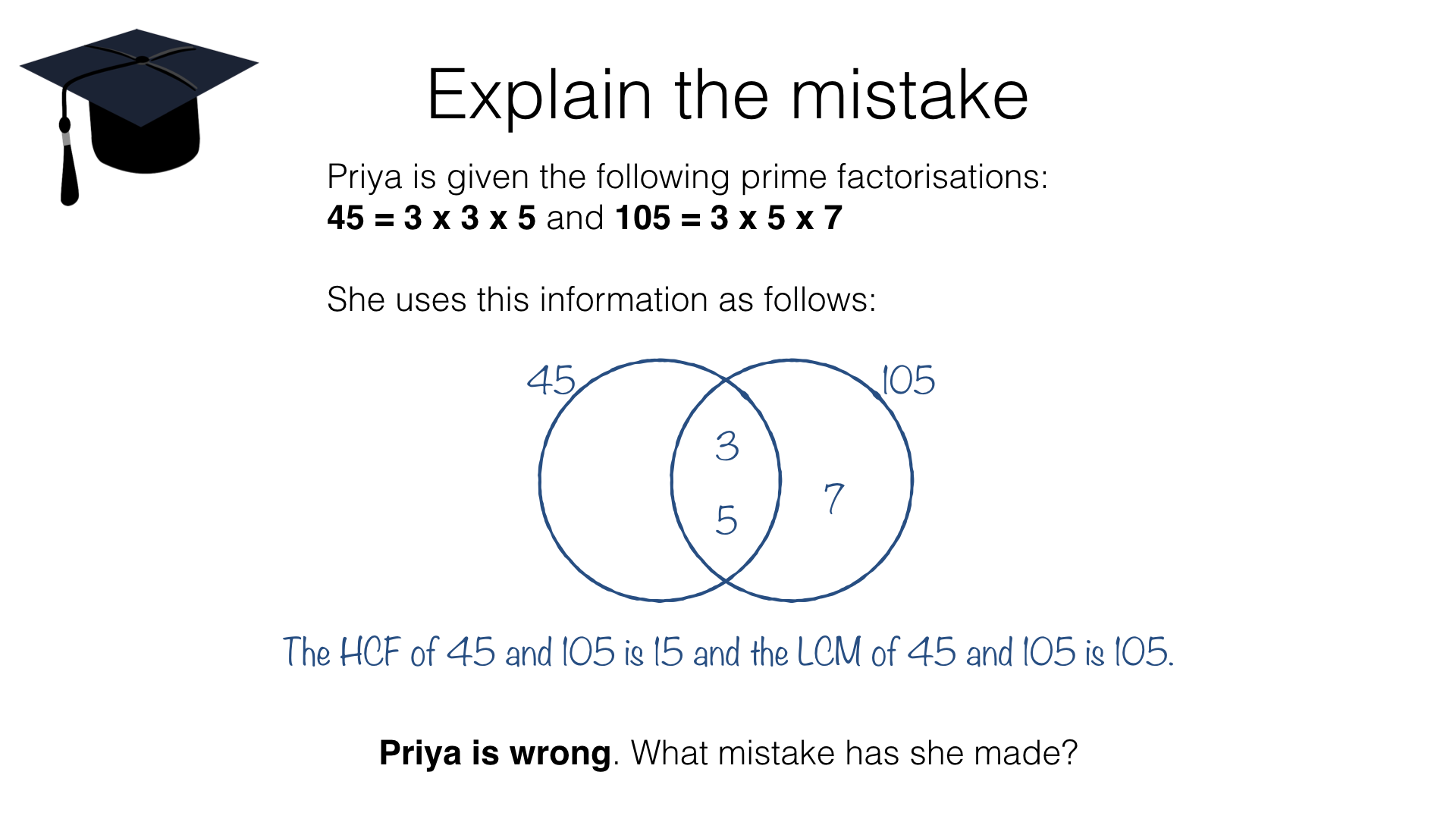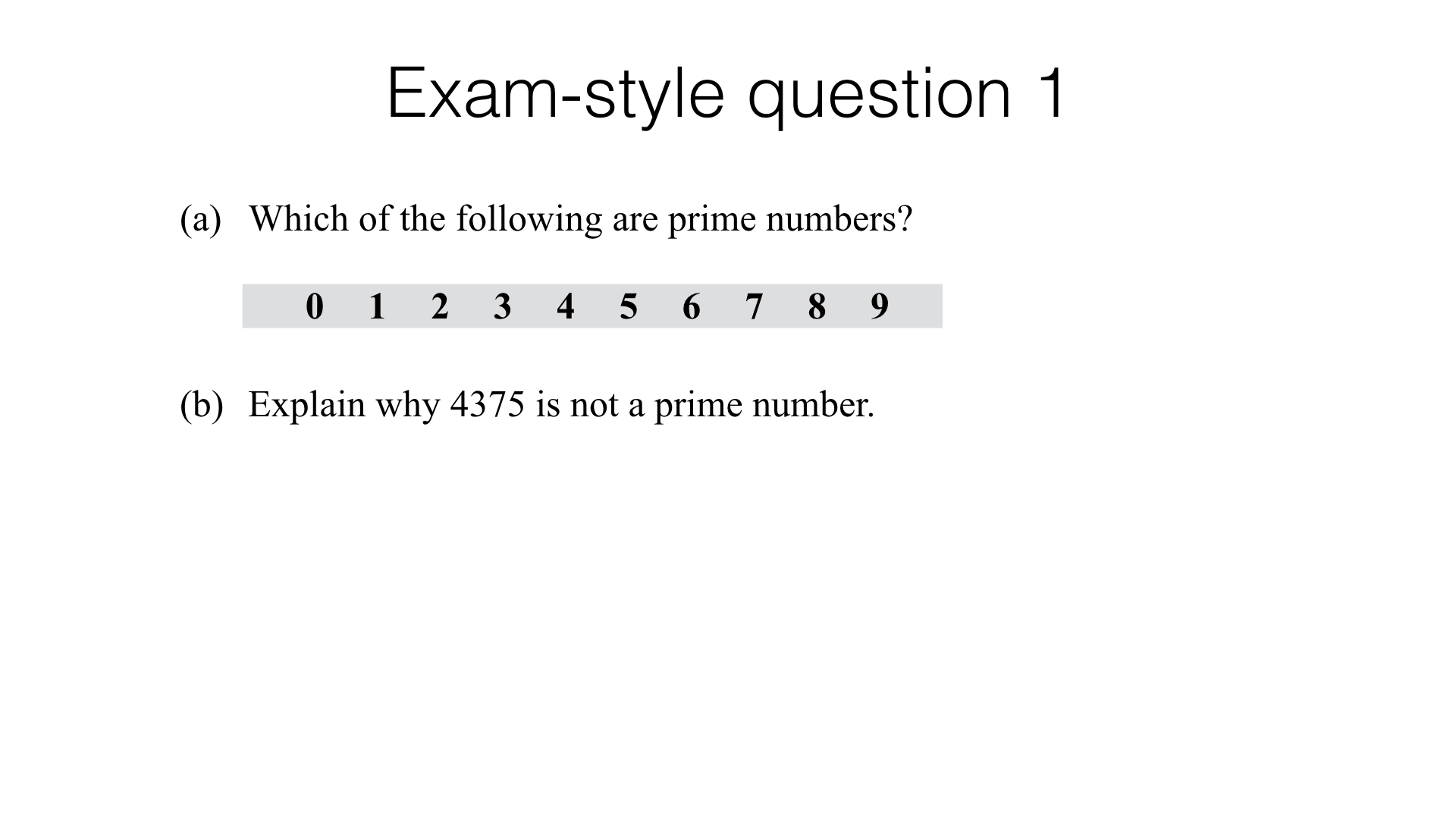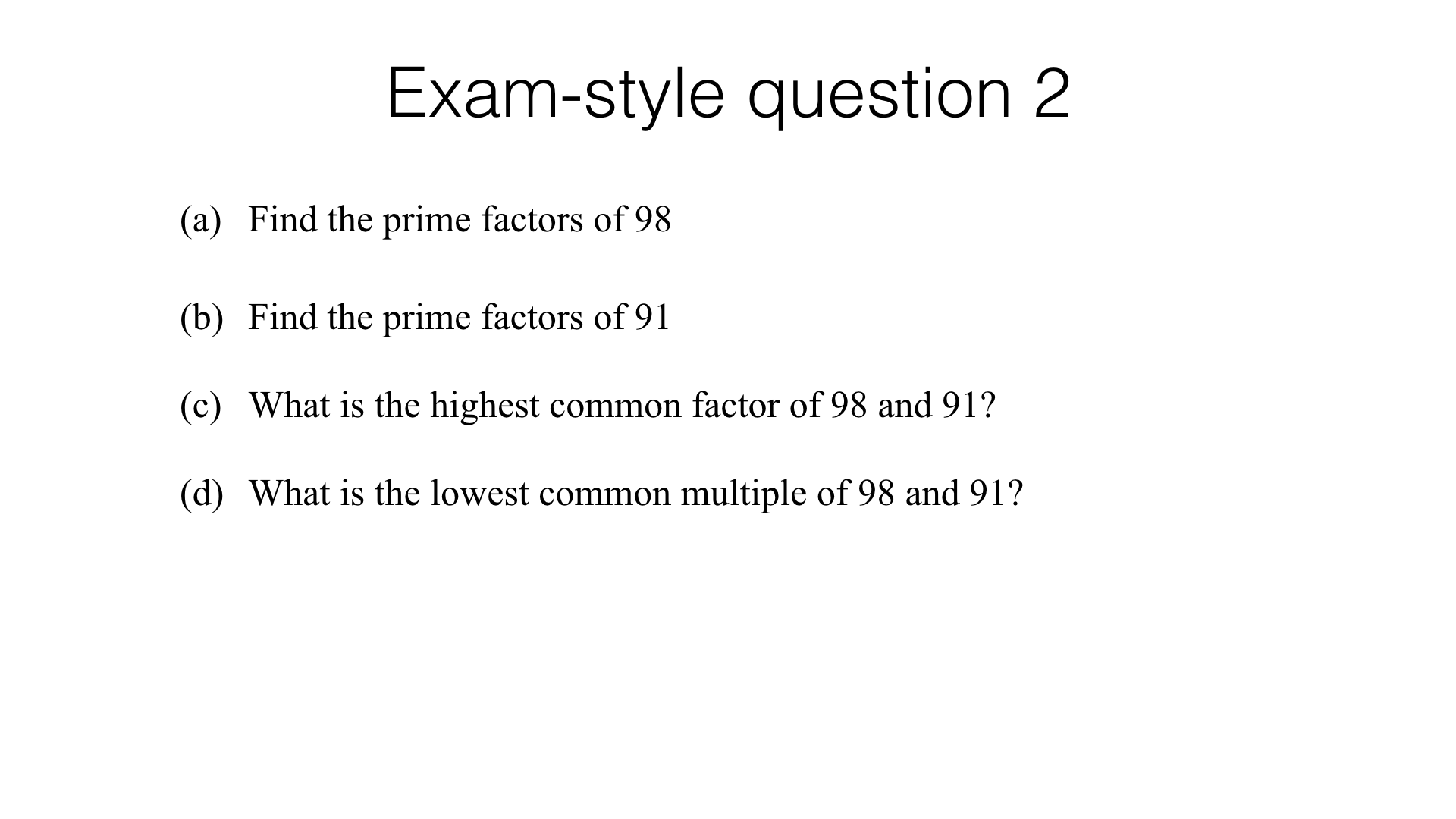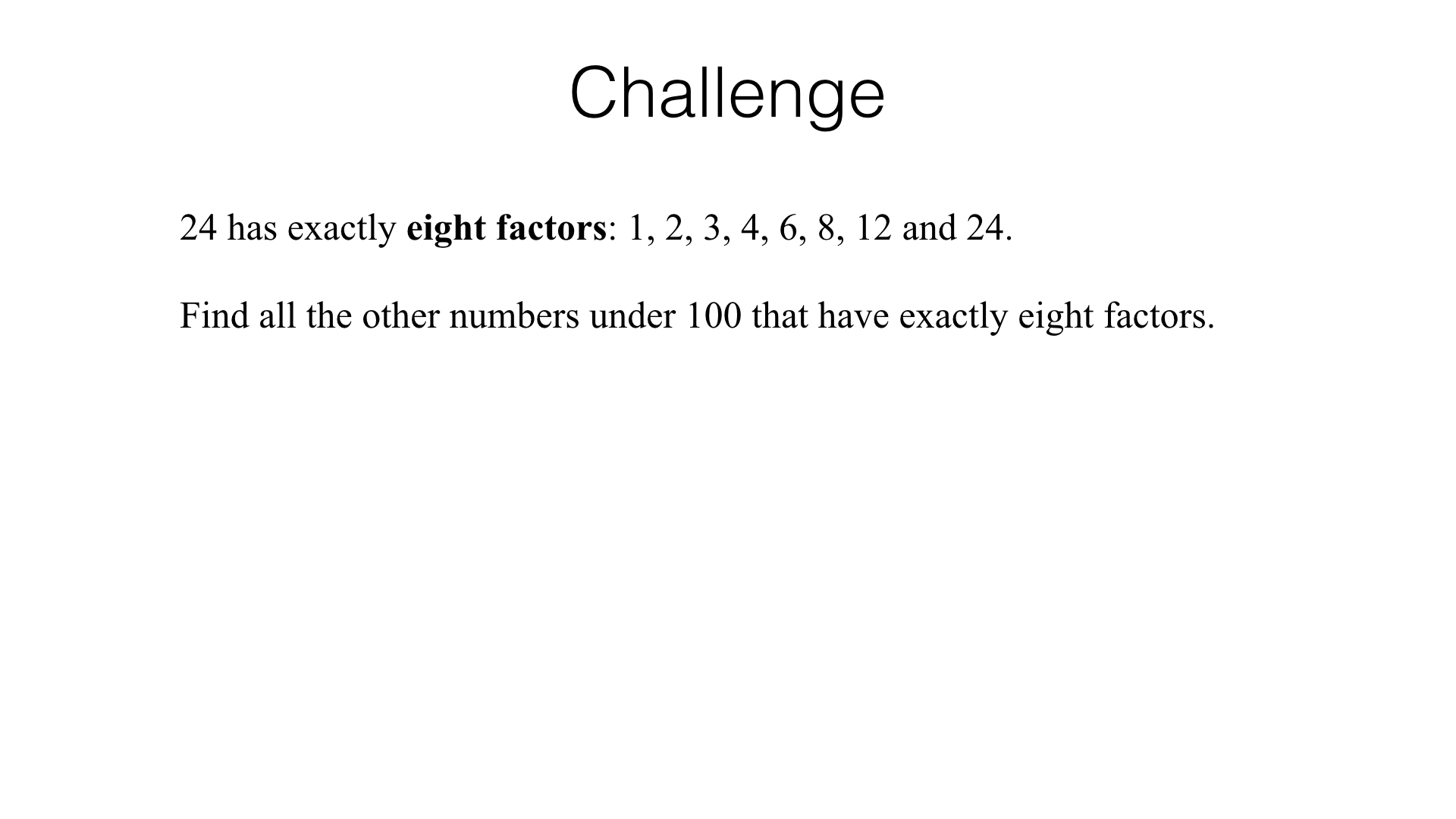This is the students’ version of the page. Log in above for the teachers’ version.
What is a prime number?
A prime number has exactly two factors. This means that 1 is not a prime number, because it only has one factor. An example of a prime number is 17. It has only two factors: 1 and 17. In general, every whole number greater than 1 has at least two factors: one and itself. For prime numbers, these will be their only factors. All other whole numbers greater than 1 will have more than two factors. Numbers with more than 2 factors are known as composite numbers. An example of a composite number is 14, because 14 has four factors: 1, 2, 7, and 14. Another example of a composite number is 9, because 9 has three factors: 1, 3, and 9.
Sieve of Eratosthenes
We can use a process known as “sieving” to find the first few prime numbers. Download the worksheet for this activity (teacher login required)...
With thanks to Frances, whose Criba d’Erastòstenes worksheet is available here. Material modified and embedded here under the CC-BY-SA 3.0 license.Skill isolation: is it prime?
In general, to test whether a number is prime, you only need check whether it is divisible by prime numbers up to the square root of the number. For example, how could we we decide whether \(149\) is prime? First, let’s spot that \(\sqrt{149}\) is slightly greater than \(12\) (because we know \(12^{2}=144\)). Therefore, we would only need to check whether \(149\) is divisible by the prime numbers up to \(12\) i.e. \(2, 3, 5, 7,\) and \(11\). If we do so, we’d find 149 is not divisible by any of those, so we can conclude that 149 is prime.
Can you see why we only need to test divisibility by prime numbers? Further, can you see why we only need to test divisibility by prime numbers up to the square root of the number being tested?
Part 1 – Prime factorisation, factors and multiples
Part 2 – Using prime factorisation to find highest common factors and lowest common multiples
Part 3 – More advanced problems involving prime factorisation
Teachers: log in to view this content.
- Factors, multiples and primes assorted problems – requiring knowledge of N4a, N4b, N4c and N6a
